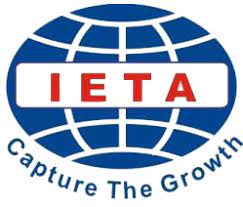The Function of English Usage on Linguistic Landscape of Padang: A Case Study on Khatib Sulaiman Street
 ),
), (1) Universitas Gadjah Mada
(2) Universitas Gadjah Mada
 Corresponding Author
Corresponding Author
Copyright (c) 2022 Lingua Didaktika: Jurnal Bahasa dan Pembelajaran Bahasa
DOI : https://doi.org/10.24036/ld.v16i1.115206
Full Text:
 Language : en
Language : en
Abstract
This study deals with linguistic landscape found on Khatiib Sulaiman Street, Padang. The aim of the study is to identify the dominant language of the monolingual, bilingual and multilingual signs and to investigate the function of English displayed on the signs. Thus, this study uses mixed method, quantitative and qualitative, since the data and the analysis of this study is in the form of pictures and text and the justification is proven by the percentage. By using multilingualism approach on a linguistic landscape research, 236 pictures of signs displayed on Khatib Sulaiman Street as the data of this study were collected on July, 2021, and then was classfied to be monolingual, bilingual, or multilingual based on the languages that exist on each sign. This research found that there are 117 signs in Bahasa Indonesia-only, 14 signs in English-only, 82 signs in Bahasa Indonesia-English, 12 signs in Bahasa Indonesia-Minangnese, 6 signs in Bahasa Indonesia-Arabic, 3 signs in Bahasa Indonesia-English-Minangnese, and 2 signs in Bahasa Indoensia-English-Arabic. Monolingual signs are dominated by Bahasa Indonesia indicating that national languages still has the strongest position. Foreign language that is predominant in bilingual and multilingual signs is English. Gorter (2006) divides types of signs in linguistic landscape into two: bottom-up and top-down, type of sign that uses English the most is type bottom-up, displayed to live both informative function, which are to tell the name of shops and to do marketing and symbolic function, which are to symbolize modernity, sophistication, professionalism, and social status.
Keywords
References
Backhaus, P. (2007). Linguistic Landscapes A Comparative Study of Urban Multilingualism in Tokyo. Clevedon: Multilingual Matters Ltd
Demska, Orysia. (2019). Hybridity and The Linguistic Landscape. Cognitive studies, 2019 (19). Https://doi.org/10.11649/cs.2007
Dora Amalia. (2021). Kamus Besar Bahasa Indonesia. Available on Apps Store: https://apps.apple.com/id/app/kamus-besar-bahasa-indonesia/id1173573777
Fakhiroh, Zakiyatul & Rohmah, Zuliati. (2018). “Linguistic Landscape in Sidoarjo City” NOBEL: Journal of Literature and Language Teaching. 9. 96-116. 10.15642/NOBEL.2018.9.2.96-116.
Finzel, Anna. (2012). “English in the Linguistic Landscape of Hong Kong: A Case Study of Shop Signs and Linguistic Competence”. (Thesis) Universität Potsdam Available from https://www.researchgate.net/publication/298217004
Gorter, D. (2006). Linguistic Landscape: A New Approach to Multilingualism. Clevedon: Multilingual Matters LTD.
Gorter & Cenoz. (2015). “Translanguaging and linguistic landscapes” Linguistic Landscape 1, 1, 54-74. DOI: 10.1075/ll.1.1/2.04gor
Landry, R. and Bourhis R. Y. (1997). Linguistic Landscape and Ethnolinguistic Vitality: An Empirical Study. Journal of Language and Social Psychology, 16(1), 23–49.
Lauder, A. (2008). “The Status and Function of English Language in Indonesia: A review of key factors”. sosial humaniora, 9-20.
Lawrence, Cameron. (2012). The Korean English linguistic landscape. World Englishes. 31. 10.1111/j.1467-971X.2011.01741.x.
Lestari, Dea Dwi. (2019). A Study of Linguistic Landscape in Medan. (Undergraduate Thesis). Medan: Universitas Muhammadiyah Sumatera Utara
Li, Shongking. (2015). “English in the linguistic landscape of Suzhou.” English Today, 31, pp 27-33 doi:10.1017/S0266078414000510
MobiSystem,Inc. (2021). Oxford Dictionary of English. Available on Apps Store: https://apps.apple.com/id/app/oxford-dictionary-of-english/id978674211
Oktaviani, Eka. (2019). Linguistic Landscape: A Case Study of Shop Names in Gresik Kota Baru (GKB), Gresik. (Undergraduate Thesis) Surabaya: Islamic University of Sunan Ampel
Prayitno, R. Y. (2015). “Linguistic Landscape and the Use of English in Surabaya Clothing Stores.” Widya Mandala Catolic University
Ramadhani, Adinda R. (2018). “Lingua Franca in The Linguistic Landscape of Gresik Kota Baru.” Etnolingual Vol 2 No 2 pp. 125-134
Rowland, Luke. (2015). “English in the Japanese linguistic landscape: a motive analysis” Journal of Multilingual and Multicultural Development, DOI: 10.1080/01434632.2015.1029932
Rusmali dkk. (1985). Kamus Minangkabau-Indonesia. Pusat Pembinaan dan Pengembangan Bahasa: Jakarta. (Available on http://repositori.kemdikbud.go.id/2947/1/Kamus%20Minangkabau%20-%20Indonesia%20-%20335h.pdf) retrieved on 3-11-2021
Shang, Guowen & Guo, Libo. (2016). “Linguistic landscape in Singapore: what shop names reveal about Singapore’s multilingualism” International Journal of Multilingualism, DOI: 10.1080/14790718.2016.1218497
Silva, Anna M. (2017). “Exploring the Language Choice of The Non-Commercial Signs in Jakarta”. Indonesian Journal of Applied Linguistics, Vol. 7 No. 3, September 2017, pp. 467-475 doi: dx.doi.org/10.17509/ijal.v7i2.8355
Wirza, Yanty. (2019). “Bahasa Indonesia, Ethnic Languages and English: Perceptions on Indonesian Language Policy and Planning.” 517-523. 10.47298/cala2019.16-8.
Yannuar, N. & Tabiati, S. N. (2016). Public Signs in the City of Malang: A Study on the Linguistic Landscape of Indonesia. In Masitoh, S., Afifuddin, M., Santi, V. M., Huda, M., & Himmah, A. (Eds.). The Changing Face of Language Pedagogy: Exploring Linguistics and Literature. (pp. 119-134). Malang: UIN Maliki Press.
 Article Metrics
Article Metrics
 Abstract Views : 865 times
Abstract Views : 865 times
 PDF Downloaded : 290 times
PDF Downloaded : 290 times
Refbacks
- There are currently no refbacks.
Copyright (c) 2022 Lingua Didaktika: Jurnal Bahasa dan Pembelajaran Bahasa

This work is licensed under a Creative Commons Attribution-NonCommercial 4.0 International License.









